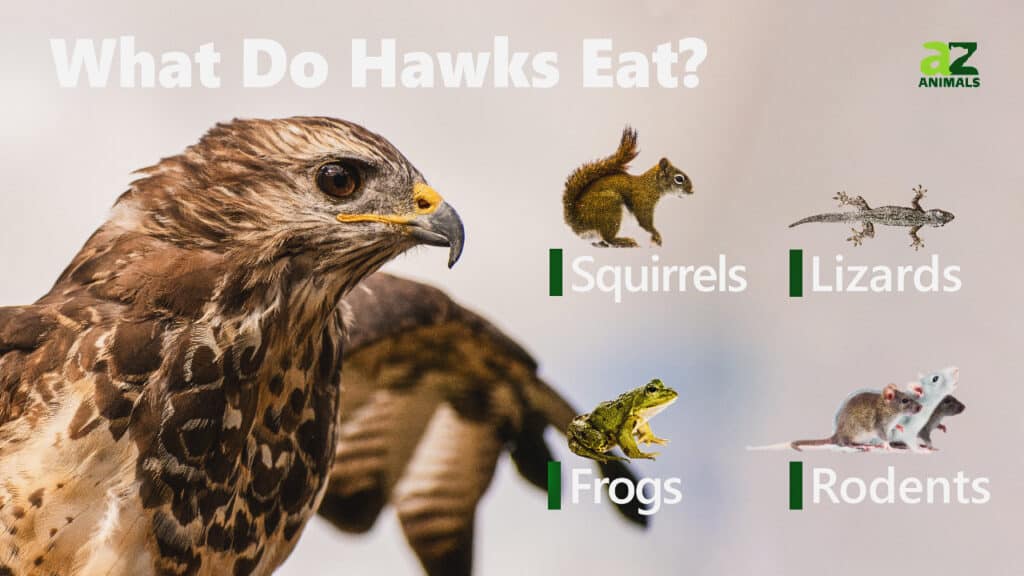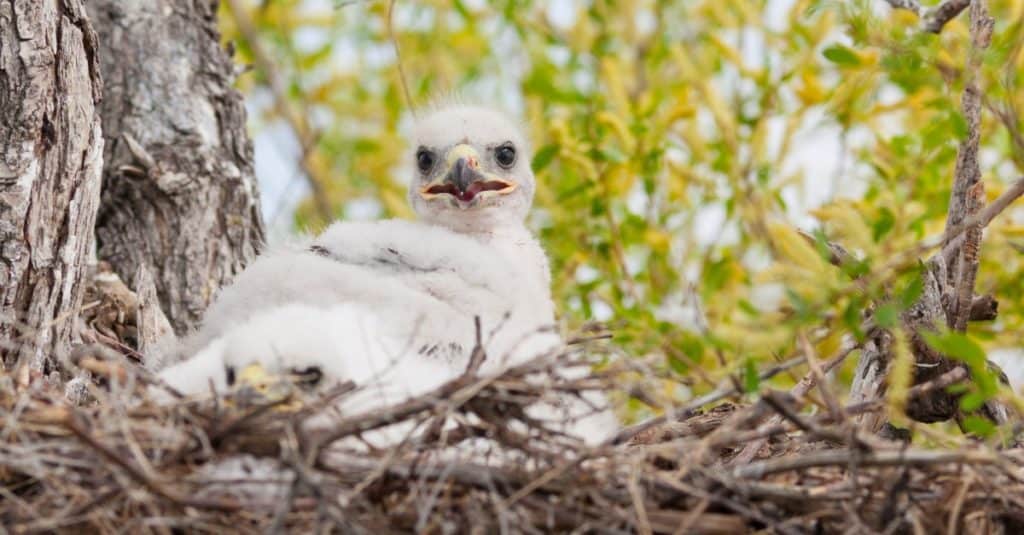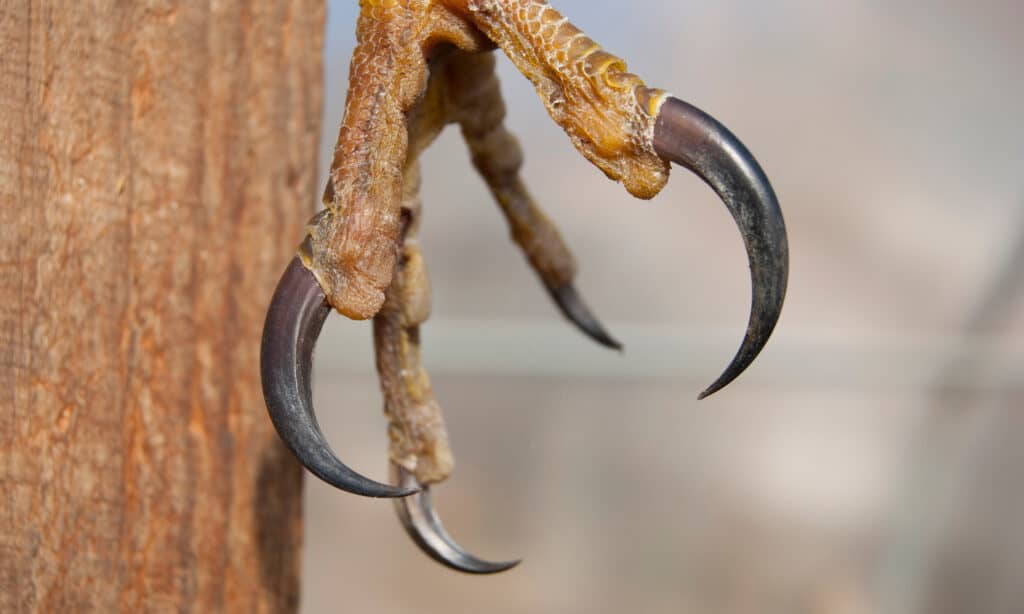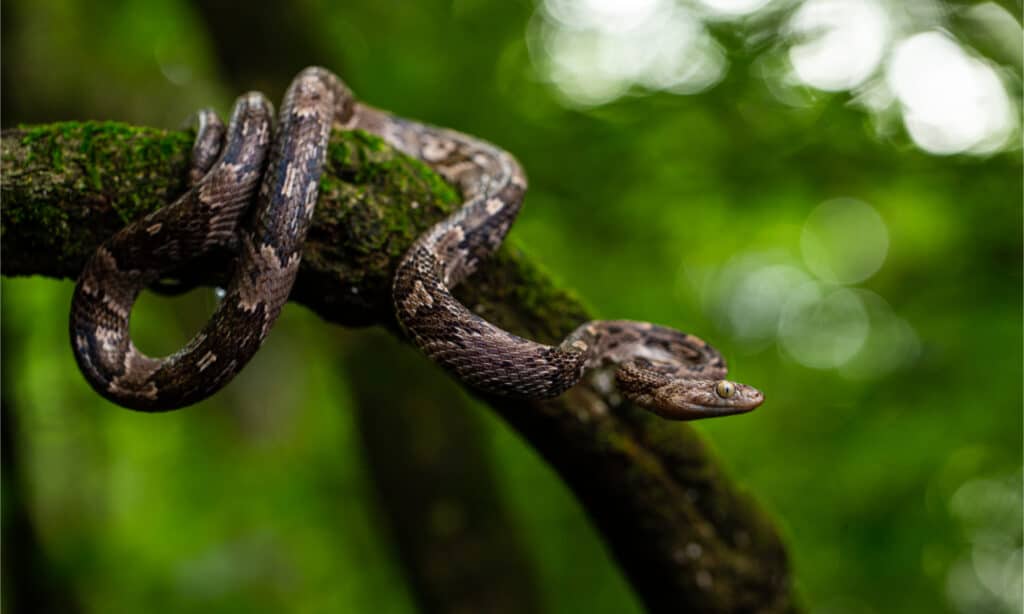What Do Hawks Eat?
Hawks are powerful, fierce birds of prey. These efficient predators are carnivores that feed on small mammals, fish, insects, and more.
Hawks are skilled hunters and can take down anything smaller than them by using their sharp talons and strong beaks.
So, what do hawks eat? Let’s dive into their typical diet, including what their young eats, how they hunt, and their natural predators.
What Do Hawks Eat?

A-Z-Animals.com
Hawks eat small mammals like mice, rats, squirrels, rabbits, gophers, and chipmunks. They also eat fish, insects, lizards, frogs, and snakes.
Hawks will eat anything smaller than themselves and are strictly carnivorous. They can easily spot prey with their keen eyesight and high soaring ability.
Birds of prey often get a bad rap for taking off with chickens and small pets, but this is rare.
In the book Food Habits of Common Hawks, published by the US Department of Agriculture, W.L. McAtee finds that hawks help rid farms of pests and other crop nuisances.
Essentially, these raptors do more good than harm.
A Complete List of 15 Foods Hawks Eat

iStock.com/Holcy
Check out this list of the most common foods hawks will eat:
- Mice
- Rats
- Squirrels
- Rabbits
- Gophers
- Prairie Dogs
- Bird Eggs
- Voles
- Chipmunks
- Snakes
- Lizards
- Frogs
- Turtles
- Salamanders
- Various insects
While not common, hawks will sometimes prey on other small birds, like doves, blackbirds, and starlings. They may even take off with a baby fox or sheep if the opportunity presents itself.
Hawks tend to favor eating small mammals like mice, but they are quick-witted and settle for anything they can pick up with their talons.
These predators often hunt for their food but will also dine on carrion (dead animals).
What Do Different Types of Hawks Eat?

Lilly P. Green/Shutterstock.com
There are more than 200 hundred species of hawks in the world, and many of them eat different foods.
Red-Tailed Hawks prefer mammals like ground squirrels, rabbits, and mice, while Sharp-Shinned and Cooper’s Hawks hang out at bird feeders and prey on songbirds.
Northern Goshawks are known to be defensive hawks that will defend themselves when threatened. They eat a variety of prey, including mammals, insects, birds, and reptiles.
Red-Shouldered Hawks are forest dwellers that dine on amphibians, snakes, and lizards.
How Much Do Hawks Eat?
How much these raptors eat depends mainly on their weight and the accessibility of prey. Some hawks will eat as many as eight small creatures a day, while others will eat a larger animal once a day.
Hawks use a lot of energy and need to eat 12-15% of their body weight per day. Young, developing birds need to eat more than adults. And females tend to be bigger and consume more than males.
The larger the hawk, the more they eat per meal. A Red-Tailed Hawk can eat a big rabbit but may go two days until its next feeding.
What Do Baby Hawks Eat?

Brenda Carson/Shutterstock.com
Baby hawks, also called eyas, are carnivores like their parents and must consume a similar diet. Baby hawks eat lizards, fish, crustaceans, and insects.
Adult female hawks lay one to five eggs per year during the spring (April or May). The eggs hatch around six weeks later, and the young are entirely dependent on their parents for food for as long as two months after leaving the nest.
Eyas eat every one to three days, sometimes multiple times per day, depending on the size of the prey.
Who Competes With Hawks for Food?

iStock.com/Alla Orlova
Hawks often compete with each other for food. There are many different species of hawk, and each kind can compete with the other for prey and nesting spots.
Other direct competitors to the hawk include eagles, owls, osprey, and falcons. Any bird of prey can compete for food with a hawk.
Who would win the fight depends on the size and overall health of the bird.
Birds of prey behave aggressively towards other birds and will fight to defend their food and their young. Even smaller birds can wound a hawk while defending themselves.
How Do Hawks Hunt?
Hawks circle and soar in the air, watching the ground below for signs of moving prey. They have excellent vision and can clearly spot a tiny mouse from over 100 feet.
These birds typically hunt during dusk and dawn and use other techniques to track their dinner. Some species will let out a shriek to set their prey running. When the animal grows tired, the hawk swoops down and grabs the creature with its talons.
The claws are razor-sharp and curved, perfect for piercing through skin and other tough exteriors. Their beaks are sharp hooks that can easily tear through flesh and bone.
Hawks are skilled, fierce hunters with excellent instincts and clever maneuvers.
Do Hawks Have Any Predators?

Rodolfo Ayala Plata/Shutterstock.com
Big hawks dominate the sky and attack smaller species when threatened or to assert dominance. The Ferruginous Hawk is the largest hawk species in North America and can easily take down a smaller bird, like the Cooper’s Hawk.
While hawks pose threats to each other, more predators await them. Eagles and hawks will fight to assert their dominance. These two also have common food interests, which they compete over.
Owls and hawks threaten each other because they eat similar food and go for the same nesting sites. They will fight for food and to protect their territories.
Snakes don’t typically attack adult hawks, but they will slither up trees and into unsupervised nests. Snakes are notorious for stealing bird eggs and hatched young and can easily pick off defenseless tiny creatures.
More from A-Z Animals
Hawks are powerful, fierce birds of prey. These efficient predators are carnivores that feed on small mammals, fish, insects, and more.
Hawks are skilled hunters and can take down anything smaller than them by using their sharp talons and strong beaks.
So, what do hawks eat? Let’s dive into their typical diet, including what their young eats, how they hunt, and their natural predators.
What Do Hawks Eat?

A-Z-Animals.com
Hawks eat small mammals like mice, rats, squirrels, rabbits, gophers, and chipmunks. They also eat fish, insects, lizards, frogs, and snakes.
Hawks will eat anything smaller than themselves and are strictly carnivorous. They can easily spot prey with their keen eyesight and high soaring ability.
Birds of prey often get a bad rap for taking off with chickens and small pets, but this is rare.
In the book Food Habits of Common Hawks, published by the US Department of Agriculture, W.L. McAtee finds that hawks help rid farms of pests and other crop nuisances.
Essentially, these raptors do more good than harm.
A Complete List of 15 Foods Hawks Eat

iStock.com/Holcy
Check out this list of the most common foods hawks will eat:
- Mice
- Rats
- Squirrels
- Rabbits
- Gophers
- Prairie Dogs
- Bird Eggs
- Voles
- Chipmunks
- Snakes
- Lizards
- Frogs
- Turtles
- Salamanders
- Various insects
While not common, hawks will sometimes prey on other small birds, like doves, blackbirds, and starlings. They may even take off with a baby fox or sheep if the opportunity presents itself.
Hawks tend to favor eating small mammals like mice, but they are quick-witted and settle for anything they can pick up with their talons.
These predators often hunt for their food but will also dine on carrion (dead animals).
What Do Different Types of Hawks Eat?

Lilly P. Green/Shutterstock.com
There are more than 200 hundred species of hawks in the world, and many of them eat different foods.
Red-Tailed Hawks prefer mammals like ground squirrels, rabbits, and mice, while Sharp-Shinned and Cooper’s Hawks hang out at bird feeders and prey on songbirds.
Northern Goshawks are known to be defensive hawks that will defend themselves when threatened. They eat a variety of prey, including mammals, insects, birds, and reptiles.
Red-Shouldered Hawks are forest dwellers that dine on amphibians, snakes, and lizards.
How Much Do Hawks Eat?
How much these raptors eat depends mainly on their weight and the accessibility of prey. Some hawks will eat as many as eight small creatures a day, while others will eat a larger animal once a day.
Hawks use a lot of energy and need to eat 12-15% of their body weight per day. Young, developing birds need to eat more than adults. And females tend to be bigger and consume more than males.
The larger the hawk, the more they eat per meal. A Red-Tailed Hawk can eat a big rabbit but may go two days until its next feeding.
What Do Baby Hawks Eat?

Brenda Carson/Shutterstock.com
Baby hawks, also called eyas, are carnivores like their parents and must consume a similar diet. Baby hawks eat lizards, fish, crustaceans, and insects.
Adult female hawks lay one to five eggs per year during the spring (April or May). The eggs hatch around six weeks later, and the young are entirely dependent on their parents for food for as long as two months after leaving the nest.
Eyas eat every one to three days, sometimes multiple times per day, depending on the size of the prey.
Who Competes With Hawks for Food?

iStock.com/Alla Orlova
Hawks often compete with each other for food. There are many different species of hawk, and each kind can compete with the other for prey and nesting spots.
Other direct competitors to the hawk include eagles, owls, osprey, and falcons. Any bird of prey can compete for food with a hawk.
Who would win the fight depends on the size and overall health of the bird.
Birds of prey behave aggressively towards other birds and will fight to defend their food and their young. Even smaller birds can wound a hawk while defending themselves.
How Do Hawks Hunt?
Hawks circle and soar in the air, watching the ground below for signs of moving prey. They have excellent vision and can clearly spot a tiny mouse from over 100 feet.
These birds typically hunt during dusk and dawn and use other techniques to track their dinner. Some species will let out a shriek to set their prey running. When the animal grows tired, the hawk swoops down and grabs the creature with its talons.
The claws are razor-sharp and curved, perfect for piercing through skin and other tough exteriors. Their beaks are sharp hooks that can easily tear through flesh and bone.
Hawks are skilled, fierce hunters with excellent instincts and clever maneuvers.
Do Hawks Have Any Predators?

Rodolfo Ayala Plata/Shutterstock.com
Big hawks dominate the sky and attack smaller species when threatened or to assert dominance. The Ferruginous Hawk is the largest hawk species in North America and can easily take down a smaller bird, like the Cooper’s Hawk.
While hawks pose threats to each other, more predators await them. Eagles and hawks will fight to assert their dominance. These two also have common food interests, which they compete over.
Owls and hawks threaten each other because they eat similar food and go for the same nesting sites. They will fight for food and to protect their territories.
Snakes don’t typically attack adult hawks, but they will slither up trees and into unsupervised nests. Snakes are notorious for stealing bird eggs and hatched young and can easily pick off defenseless tiny creatures.






